We've spent the better part of the last two weekends preparing for the newest animals to arrive on Beatha Fonn. And this, my friends, was pretty dang exciting for an animal-crazed-farm-loving-homesteader like me. Spring time is the time of new beginnings, new options, and new life. Getting to welcome new animals to the homestead seems so natural with the flow of nature – things are blooming, arising, and blossoming anew!
Our farm is situated on five acres, most of which is pretty hilly. Though this makes it hard for gardening, it's perfect for grazing animals. We quickly chose a paddock of land next to Sal's pasture that our new pigs could call home. It's an acre of land that is full of a variety of vegetation and bugs for them to dig up and poo on.
I know that sounds weird, but I really want them to poo on things.
This land hasn't been used, well, ever? And it shows. It needs some animal action! Animals eat down the weeds, spread seed, till it up, and fertilize it. That's exactly what this patch of land needs.
It was also very important to us that we could “pasture” the pigs as much as possible. We wanted them to have lots of room to run, lots of grass, twigs, brush, and bugs for them to eat, and to be able to soak up lots of sunshine.
So here's a small checklist and cost breakdown of what we did:
1. Find a reputable farmer to purchase pigs from. Just like any farm animal, it's absolutely essential that you bring healthy animals onto your homestead. It can be a more difficult challenge to control this when you're purchasing from large commercial operations. We chose to purchase our pigs from a local farmer, just a quarter mile down the road. We've been able to walk his operation many times and see these piglets on different occasions – from birth to weaning to now. It's been nice to feel comfortable that we're buying from a safe producer. And to be able to hand the money directly over to him. He's also offered us a ton of information and support in getting started.
Yes, it helps to have someone who knows what they're doing. Find someone like that!
Pig Costs
Pigs: $75/piece
*$10 discount from the farmer for the milk that we'd been bringing him for the pigs already
2. Decide on a patch of land. The amount of land that pigs technically “need” is minimal. Commercially, pigs are kept in small 4×2 cement paddocks, inside, with no access to fresh anything. Obviously, this is not what we wanted. We wanted our pigs, like all our animals, to be live as close to their natural way as possible. For pigs, this involves rooting in the dirt and lounging around in mud. We will be raising five pigs total this year, two of which are here now. These five pigs will have an acre of land to roam.
3. Fence the patch of land. Because we were fencing an acre, we held a pig pasture party. It's amazing how many people will show up when food and beer is offered for labor. Within half a day, we were able to sink the posts, nail in the insulators, string the wire, and build the pig shelter. But wait, I'm getting ahead of myself…
Based on Joel Salatin's advice, we decided to use an electric fence (what we call a ‘hot wire' fence) in leu of a traditional fence. This worked better for us because the area we were fencing was so large it would have taken a TON of material to fence it all in with lumber. We also already have Sal's pasture in electric fence so it was an easy extension to fence the pig pasture with hot wire as well.
First off, we dug post holes with a rented auger (the best $75 you could ever spend with regard to labor trade-off).
Then, we sunk these nice trellis posts two feet into the ground, leaving four feet above the ground. BONUS: We got these trellis posts for free from a local orchardist who was looking to get rid of them. Talk about saving some money! Dear me. I'm ever thankful for this provision.
After pounding in the posts, we nailed insulators at 6″, 12″, and 28″ above the ground. The fence has three wires in total. Even though the pigs will really only need the bottom two wires to stay contained, we wanted to be able to put Sal in it if need be. And thus, we ran a third wire higher up.
Fencing Costs
Electric wire: $41.99
Post insulators: $65
Nails: $15
Auger rental: $75
4. Get it hot. An electric fence is no good without electricity. Get that sucker up and running. I put my husband in charge of this because I HATE getting shocked and messing with electricity. Plus, the entire concept of how it works is beyond me. I know my role. This isn't it.
Electricity Costs
Electricity: $5/month, approximate (we pay this amount already to keep Sal's pasture hot)
Electric box: $0, already had and in use
5. Build a wooden gate. Again, per Joel Salatin, one should never use an electric gate with pigs. Pigs, contrary to popular belief, are very smart animals. Once they learn that the fence will shock them, they will respect it. If they learn that a certain area of the fence, such as the gate, will hurt them it can become very difficult to ever get them to cross that area again. Because of this, and because of the ease of not having to open and close an electric fence all the time, we build a simple wooden gate – about 3 feet wide – as an entrance point into the pasture. It keeps them in. They won't fear it. When it's time to harvest, it should be very easy to get them out of it.
The bonus is that it looks prettier, and more “farm-esque” than an electric gate. What? These things matter to me.
Gate Costs
Lumber: Free
Galvanized Hinges: $15
Galvanized Latch: $7
Earth anchor: $6
6. Build a shelter, The “Pig Palace.” I love, love, loooooove the way this shelter turned out. Using the recycled and free posts from that same orchardist, we were able to build the entire shelter for the cost of the roofing and hardware. The area measures 10X10. Each side has three sunken posts, two feet deep. The walls are then reinforced with posts running horizontally and secured with, practically, the biggest nails we could buy. The roof is a nice metal sheeting – the most expensive part of the whole project.
Pig Palace Cost
Lumber: Free
Hardware: $16
Metal roofing sheets: $130
Didn't it turn out great? It's so simple and yet so rustic and lovely. I love it and frankly, I sort of want to have a sleep over in their with them. It's like a pig fort!
7. Set up a feed and watering system. I'll talk more about this in a separate post, but for the time being (while our pigs are contained in the Pig Palace and are still very little) they are eating out of a small trough and drinking out of a small, rubber container. We have a large container and pig nipple watering system set up for when they are big enough and are secure, comfortable, and settled with their new surroundings.
Feed/Watering System Costs
55 gallon drums: Free (a score from my brother-in-law's work)
Pig nipple: $11
Trough: $0, already had
Water bucket: $0, already had
There's obviously a million different ways to go about a project like this and a million ways to save and shave off extra spending. I would have loved to salvage used roofing material, but we were scrambling at the last minute and needed to get a roof on…like NOW… so we ended up buying new roofing from the store. It also may be possible to barter for the actual pigs if you've got a wonderful farm good or service you can offer. The options are limitless!
So far, “Chester” and “Wallace” seem quite happy to be on Beatha Fonn. They've been scarfing up lots of cultured milk from Sally and eating all of our food scraps (don't worry, they're organic!) from the kitchen. It's truly like having the cutest garbage disposal you could imagine.
Our pigs are getting a local, organic grain feed as well, though we're hoping to supplement with as much high-quality scraps as possible. While it's an option to hit up grocery stores and bakeries for their “cast-offs” to help and buffer the feed bill, we decided we'd rather raise them for a slightly higher price and keep to a more organic, natural diet. I don't want to feed me animals a bunch of GMOs or pesticides. But that's just me.
I hope this is helpful in getting some more of you started with pastured pigs. Frankly, now that they're here, it's almost hard to imagine the farm without them.

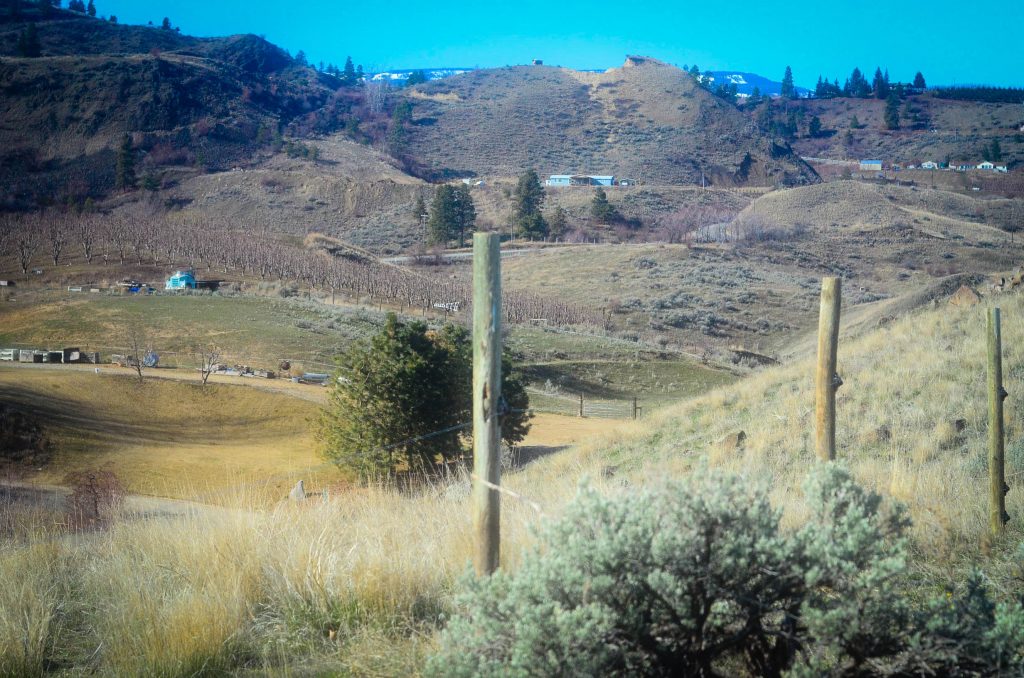
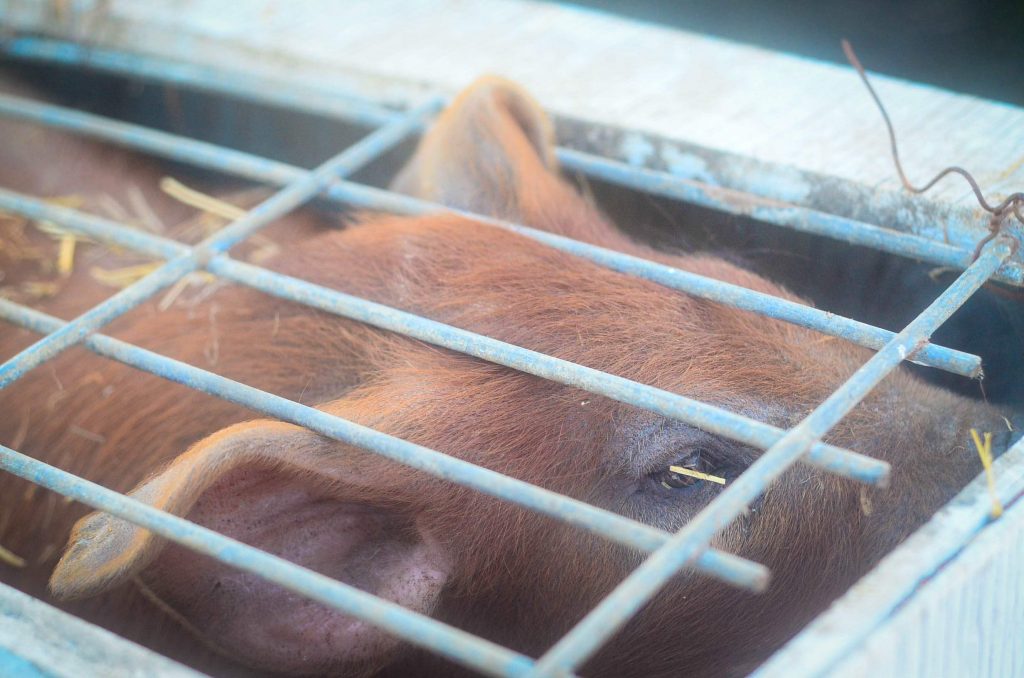
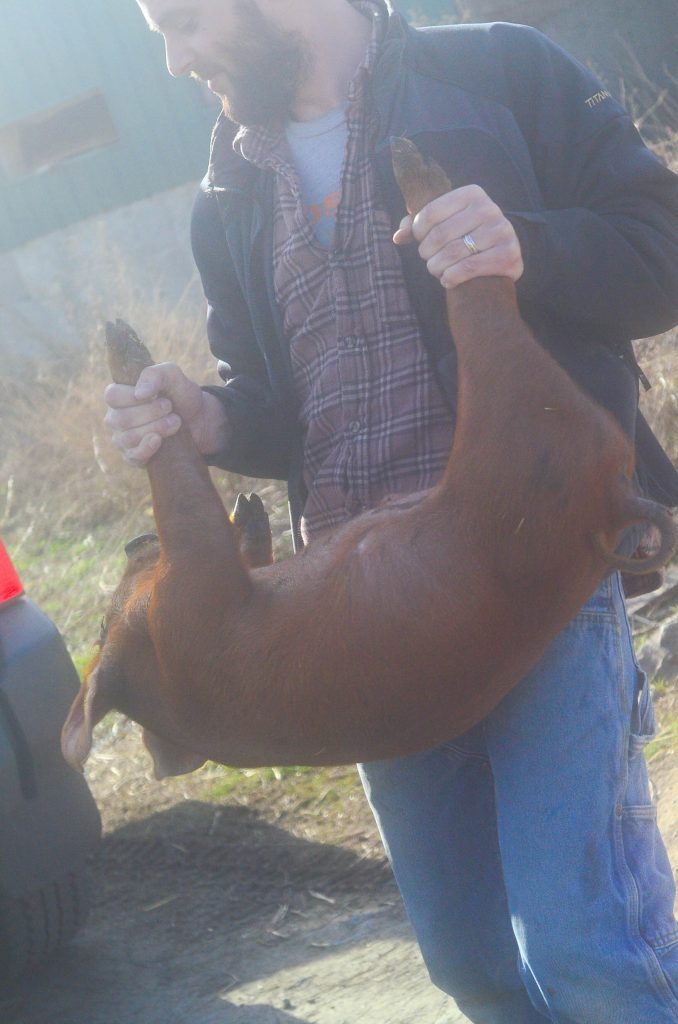
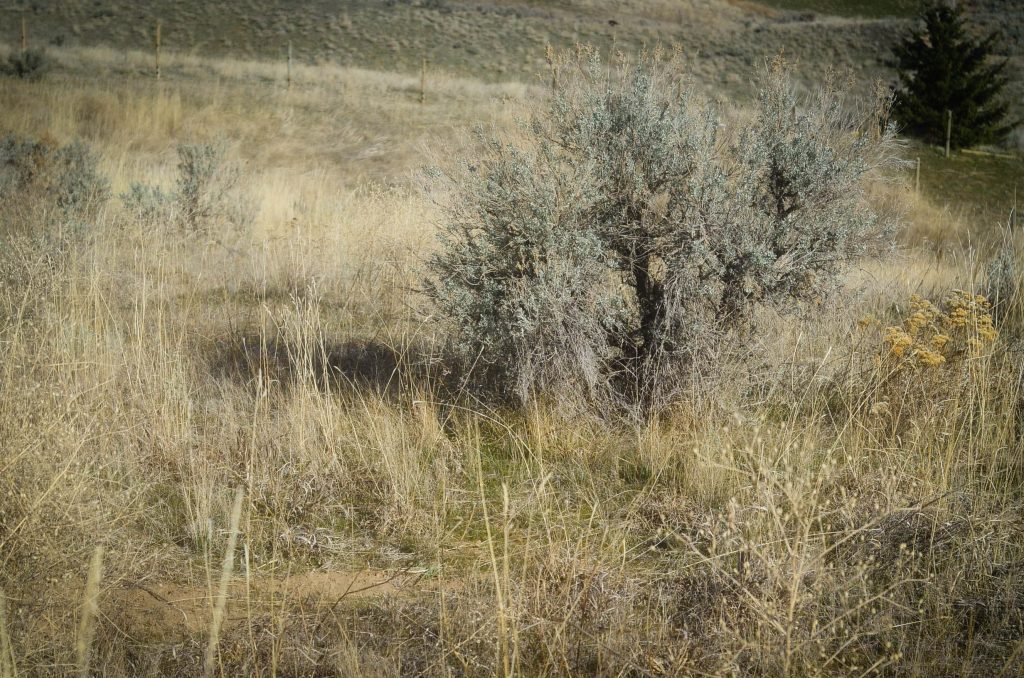
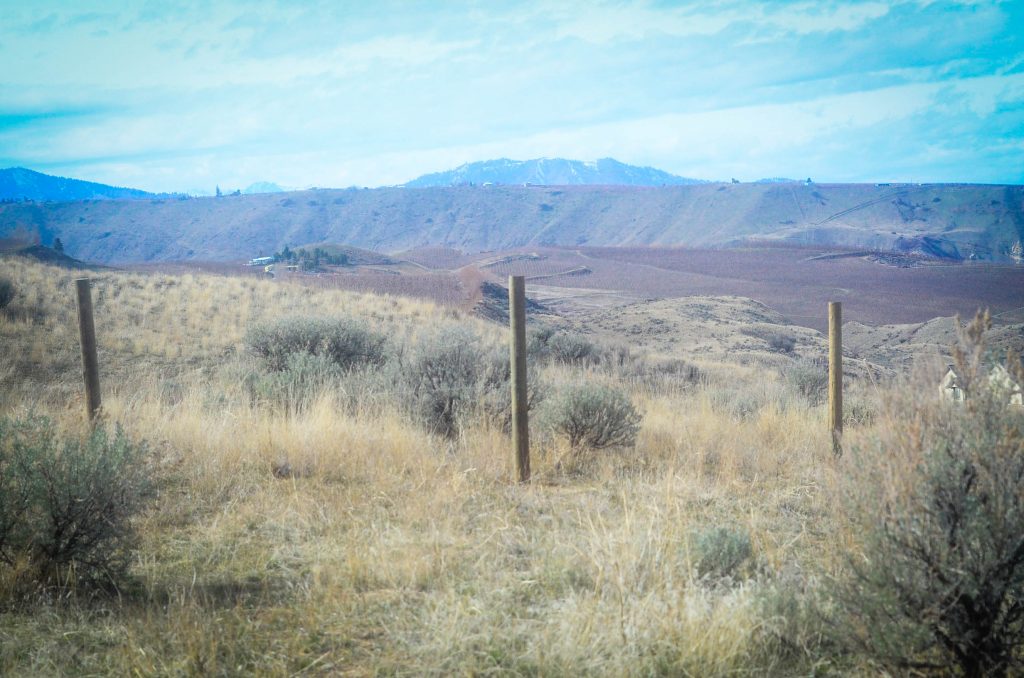
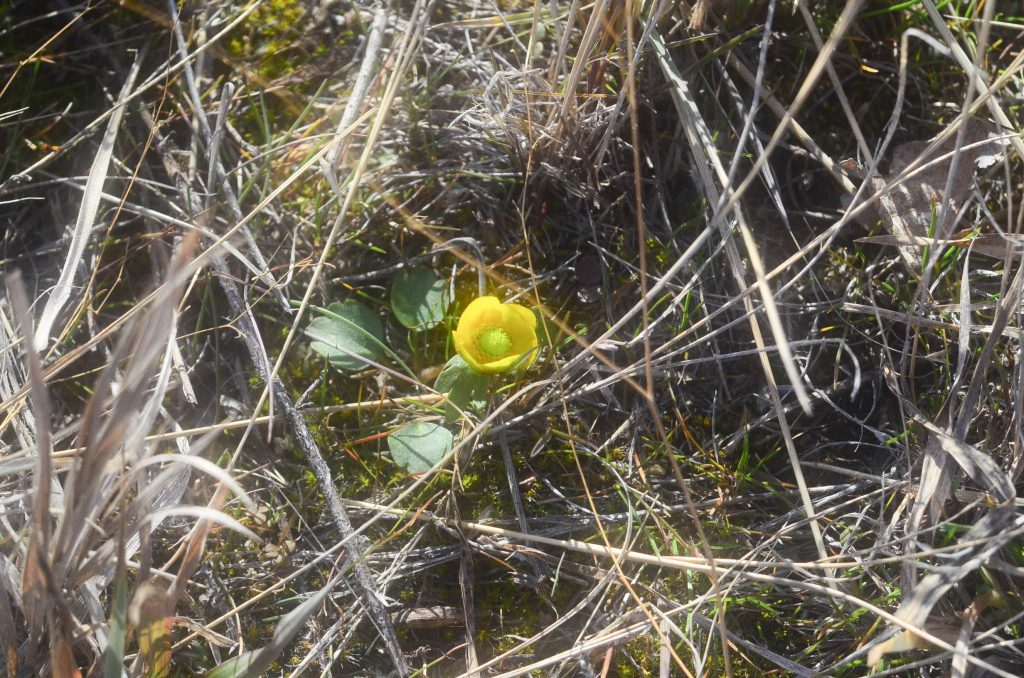
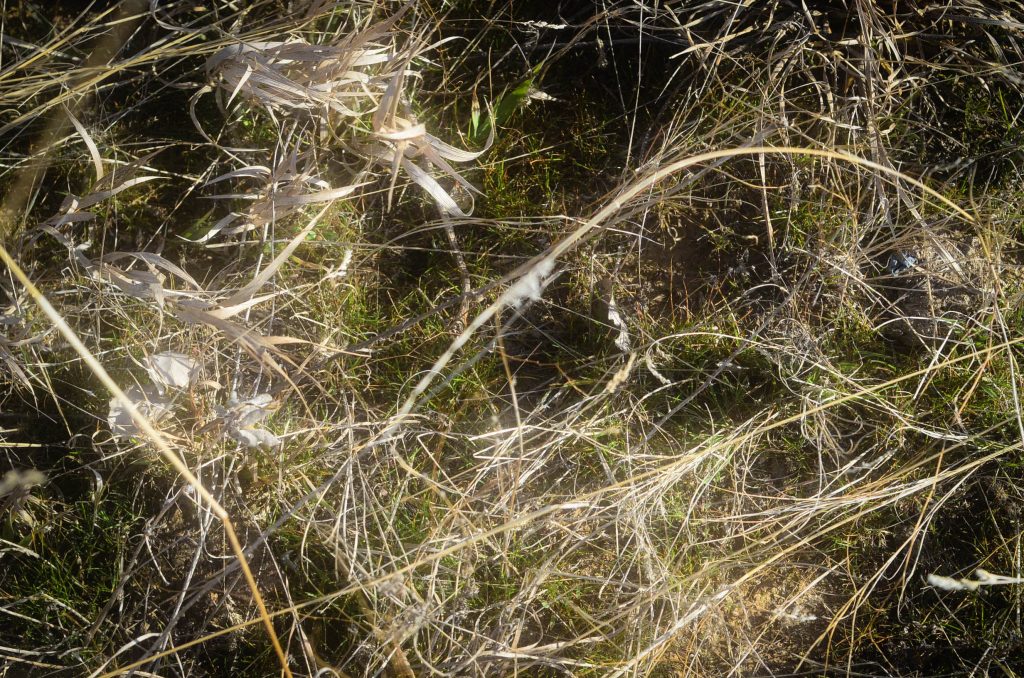
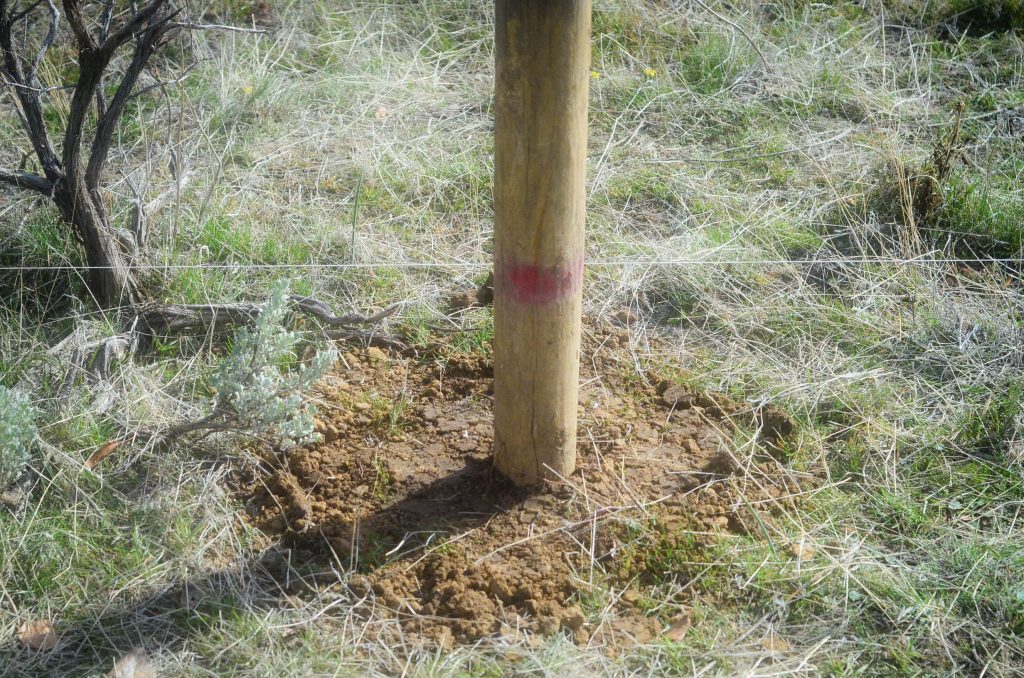
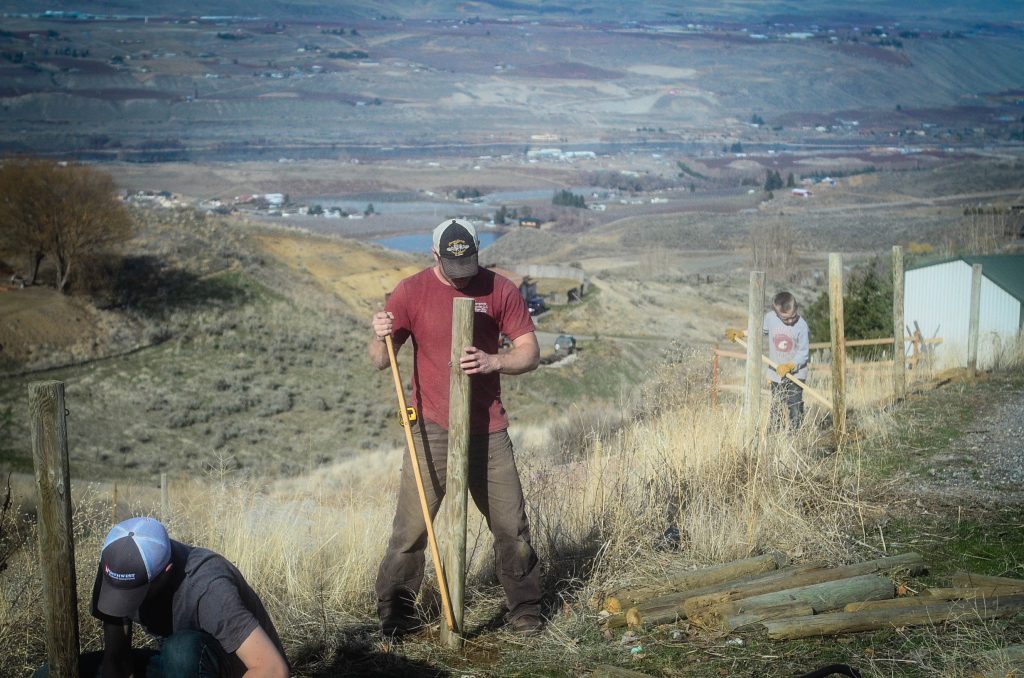

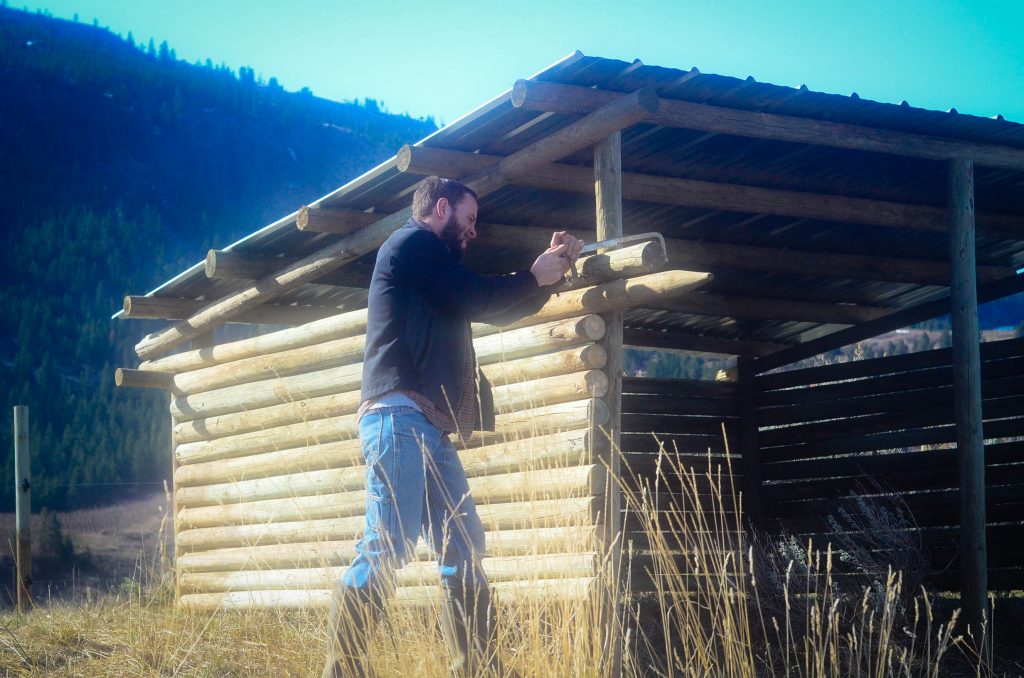
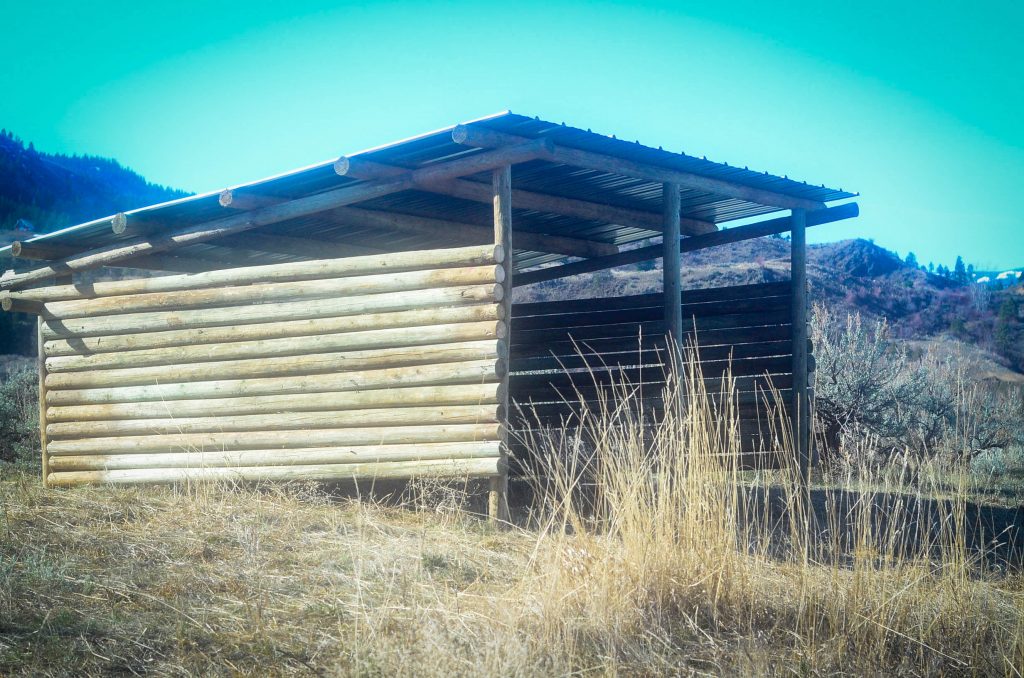
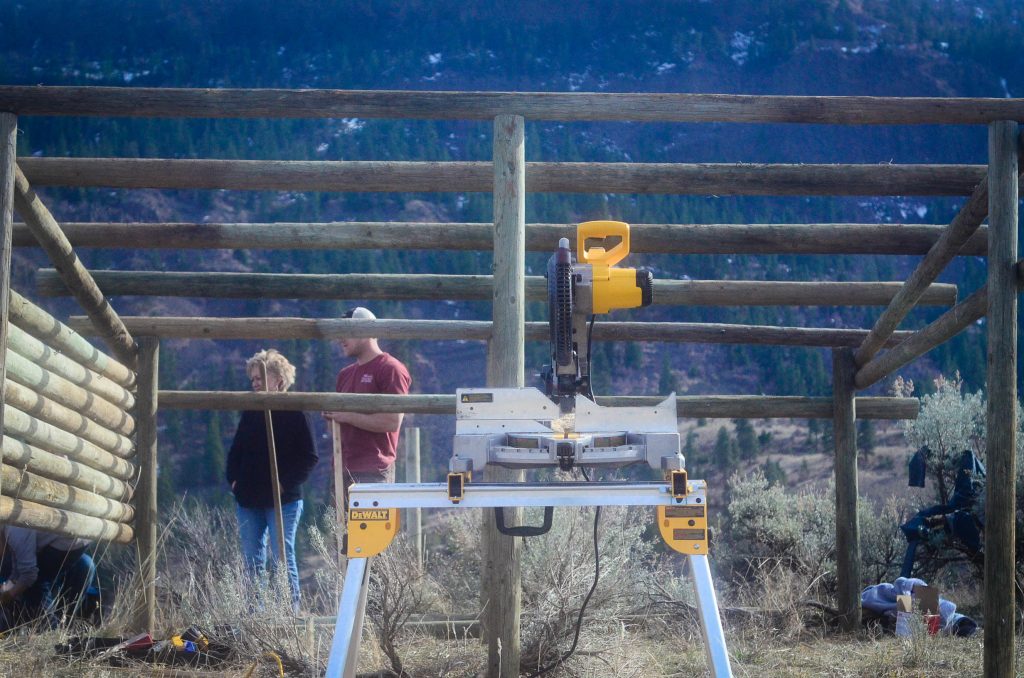
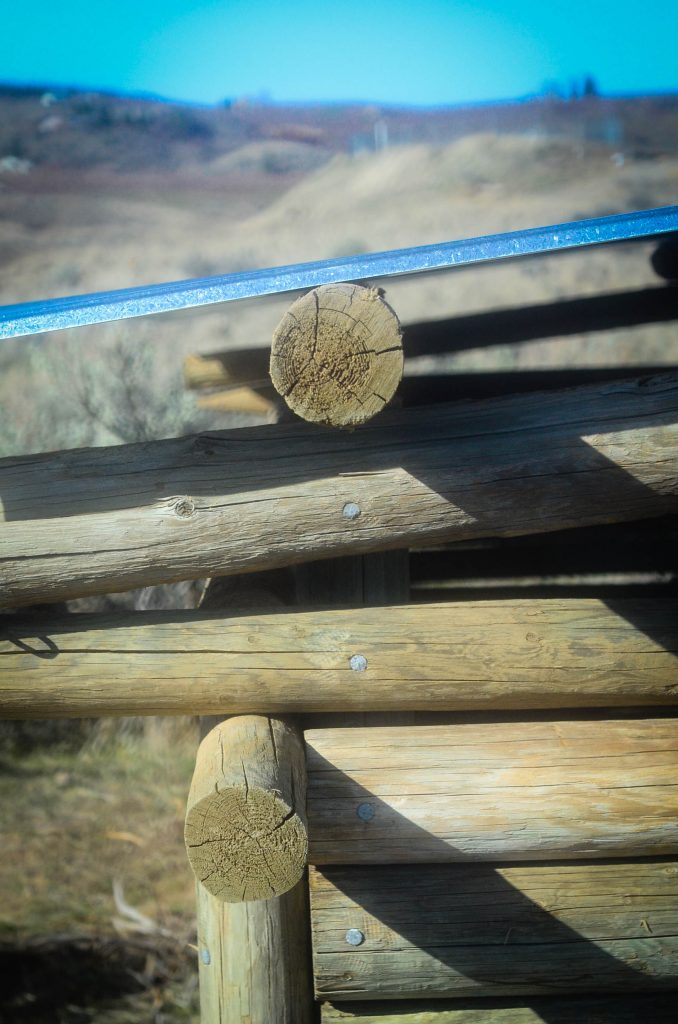
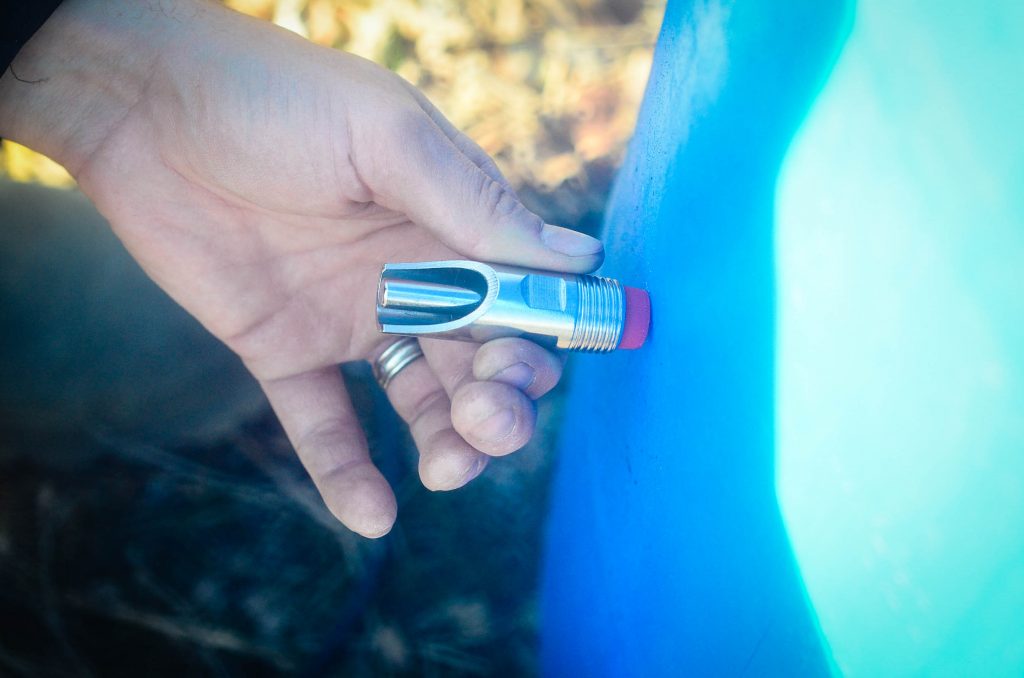
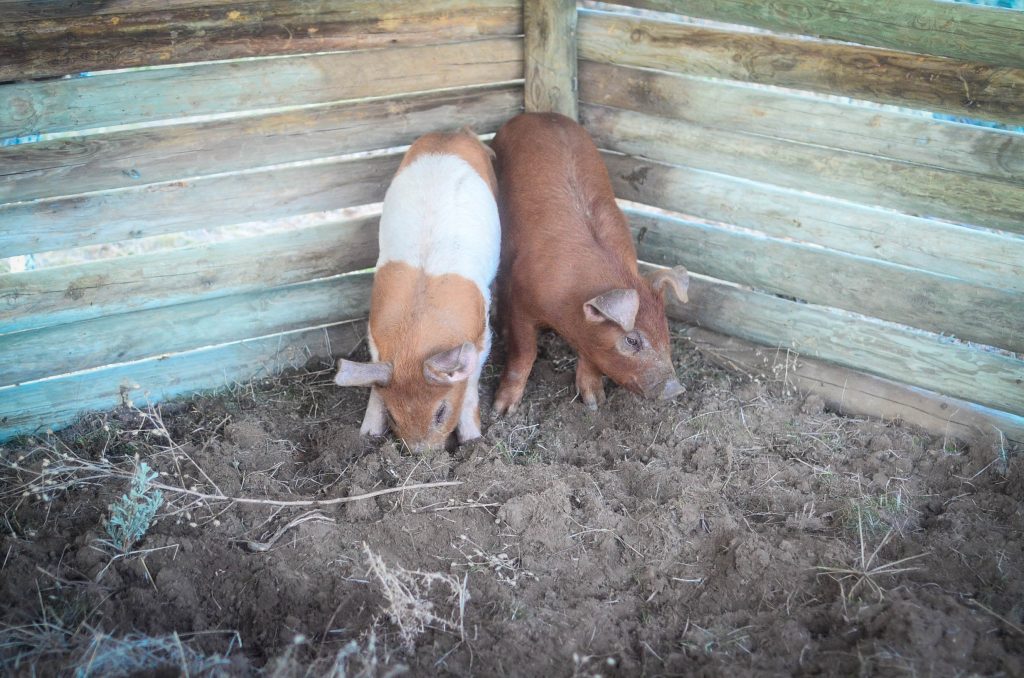
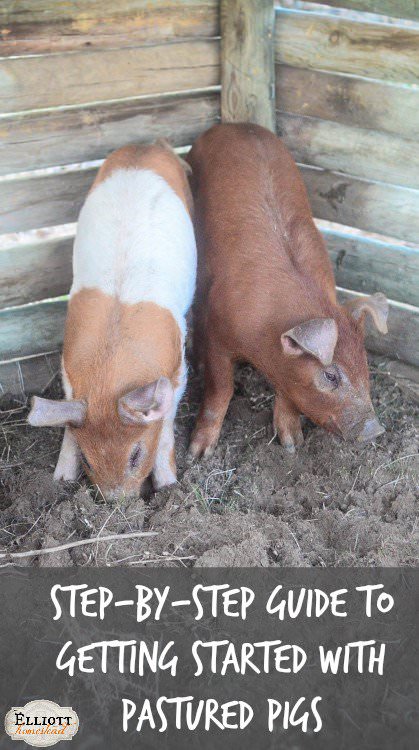
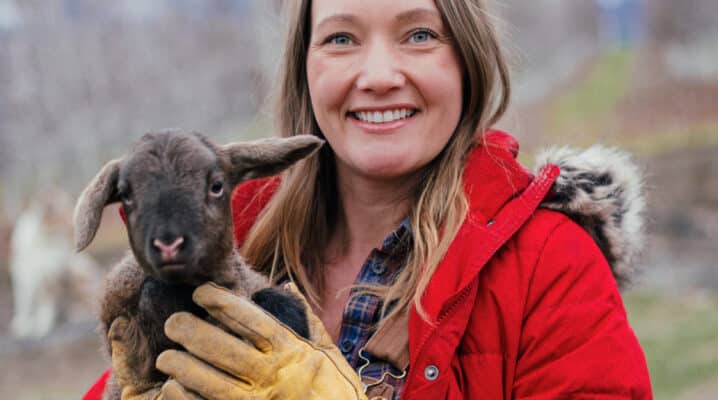
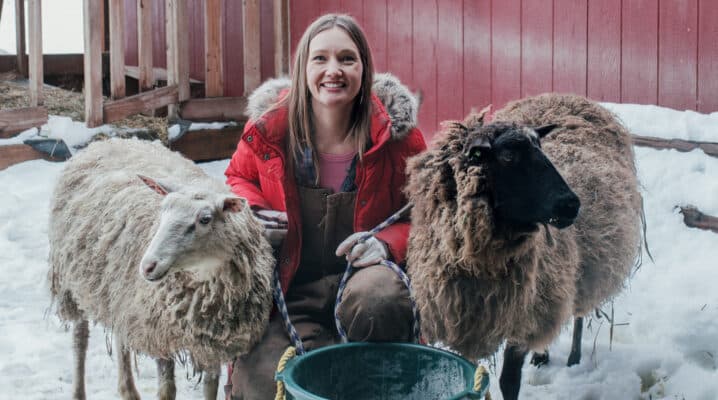
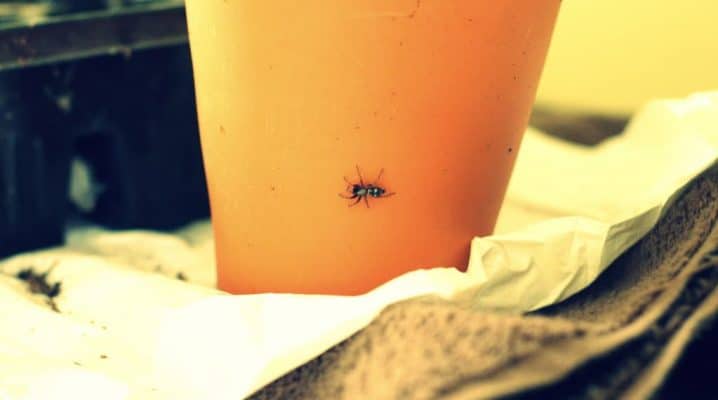

Looks like a great set up! I hope the electric fence works out. I know people who use it without problem and others who could never get it to work, it could have also been something to do with their set up. On a totally different note, I’m curious to know if the pigs end up eating the bitter brush and sage brush. I can’t remember which, but one of the two is actually high protein forage that many of the local wildlife depend on.
I think it’s the Bitter Brush you’re thinking of. When I used to work for fish and wildlife we’d sometimes go out and plant it as winter forage for deer. It was like getting paid to go for a nice hike and do a little work. Score one for the pigs, and the Elliotts if the pigs like it!
If I named them, I’d never be able to let them go! They’re beautiful 🙂
I love reading your posts… Although we are almost a world away your “advice” really helps ~ thank you!
Love your piggies – what breed are they? I’ve never seen any like them before. ( I cant wait till we get ours…. *sigh* ) Have a blessed day Elliott Family.
They’re a cross-breed.
What breed of pigs are these? We are looking into getting some – possibly American Guinea Hogs, but I’m open to suggestions and advice. (Also, even though we’ve raised chickens for meat, I’m not sure about pigs when it comes to butchering time.) Thanks for your informative posts!
My husband chose Red Wattle Hogs to pasture, because of their temperament. They were awesome! They followed him around like little baby ducks! Good luck!
Went thruogh your posted article on building the pig’s Palace as you put it. As a South African i am so delighted to learn from your guidance, particularly step by step the budget you inhetrntly built up into your article. Meticulously done. Thank you so much.
Ephraim from SA.
I loved having pigs growing up. They were such great animals to watch. One year we had a Momma pig who had a bunch of babies and one of the babies had 5 feet (another one growing off a front leg). The pig never had any problems in life with his extra appendage and was babied on the farm by us kids due to his special status. He was also tasty when we donated him to the local county fair’s 4H booth for them to serve him as pulled pork one summer!
So excited to see how your pig raising adventure goes!
LOVE.
We love our porkers! We chose electric fencing for the same reasons. It worked perfectly for over a year. Then they decided it didn’t hurt to much if they ran through it and once on the other side, it was worth it. Now, I have the last one in a pallet made enclosure. Every day I go out there and talk to him like he’s a child. I explain it was much nicer when he had run of the garden, over 3300 square feet, but since he couldn’t follow the rules, he’s grounded. He’s scheduled to be processed this Sat. My almost 18 year old son does the slaughter and him and I butcher it out. It makes me very happy to know if I weren’t here anymore and the world fell apart, my kids would have some knowledge to care if themselves and each other. Thanks for sharing and being you!
Great post! I have wanted to do this at our house but my husband is SO not into farming! I settled for chickens instead and we buy pork from a local farmer.
I’m curious, do you not have predators in your area? I’d be afraid of leaving them out 24/7. We have coyotes (that have taken a few of my chickens).
Ours go into the shelter at night. We do have predators but thus far, they haven’t been a problem on the farm.
We’re gearing up for pastured-pigs this year too! Your post has been very illuminating–I’m going to share it with hubby. THank you!
How long will you have the pigs before butchering? I love you set up!
About six months?
Thanks so much for this breakdown!!! We hope to have pigs one day. Right now we’re in the city where we can’t but I know we will one day, and I’m definitely going to pin this for future reference!
Hi Shaye,
We have been raising milk fed, heirloom pastured pigs for about 8 years and in the past 2 years we have started to breed our own. We have found that 7-8 week old piglets (we keep ours with their mothers until 8 weeks) have a hard time with electric wire and tend to go through it. We have set up a “holding pen” of sorts using cattle panels. We have one string along the bottom to get the pigs used to the shock. After about two weeks they are usually big enough to move into the electric wire/string area and will respect the wire boundary.
Also, I don’t know if you are familiar with this site but it is LOADED with awesome pig information:
http://sugarmtnfarm.com/
Looking forward to following your pig journey…:)
I hope you can help me !
We were given a 2 year old pot belly pig. This pig, has been raised as a pet and fed dog food its whole life. I really want to raise it for meat, now that its ours. Can you eat pot belly pigs ? He is already about 80 pounds. Obviously I wouldn’t want to eat it right away considering it’s diet, up till now. If I were to switch it to a proper diet, would it be safe to eat ? I would hate to kill him and then find out, that he is inedible . Thank you in advance for any help !
You absolutly can eat a potbelly. I raised them just for that. I alway make sure he is cut atleast two months before butchering.m
Thank you for this information. We are moving into our homestead in about a month and I’m really hoping to get a couple of pigs right away so they can go to work on the land as soon as possible. Like y’all, our land has not been used and could really benefit from some pig poo action. If you get the chance, please visit and/or share my new blog with others. We could use all the advice and encouragement we can get. Thanks again!
http://tennesseehomestead.wordpress.com
I have a few questions, if you don’t mind answering. How far apart did you space the posts, approximately how many post insulators did you use, and how many feet of the electric wire did you use? Thank you so much for the time!
They are ten feet apart. Three insulators per post. I have no idea on the electric wire because I haven’t actually measured the field.
I was searching the web on raising pigs when I came across your blog. Looking through the pictures, I immediately recognized the landscape as Eastern Washington (though I thought it was closer to Chelan) and I cannot begin to tell you how happy I am to see such an awesome blog coming out of my childhood stomping grounds.
I am looking to start raising some pasture pigs for personal consumption and would love a chance to learn more about the experiences you had. Did the fencing hold up? Anything you would do differently? How did you source your feed? I’m very excited about this new venture, but it won’t hold a candle to what you’ve done on your land.
Hi, I was wondering if I could see a picture of your gate? I had the same concern with doing a typical three stand electric gate but wasn’t sure how to tie in a nice one!
very big thanks for the guide
Very helpful post .I have 2 Idaho Pasture pigs to pick up shortly and am starting from scratch. Just finished good-looking ( I am like you with regards to “farm buildings”) chicken coop. Reopened my veg garden. I picked the pasture (with small stream flowing through) and needed info on electric fencing. Like I said your post helped. At nearly 75 this will be most exciting new chapter.
sorry having been.caught up in reading about ipp ‘s im late getting out of here .I am glad that your headlne caught my att, as I was already finished until…. I send this now for 2 reasons. 1.. so to remind me whenever I get back home take time -soon or later – to finish reading and checking out more of your photo.2 just want to say and / or ask if youve noticed the amazing things in youf photis that I ( i am a surreal and abstract artist and faces play a large part in my work anx lofe
sorry having been.caught up in reading about ipp ‘s im late getting out of here .I am glad that your headlne caught my att, as I was already finished until…. I send this now for 2 reasons. 1.. so to remind me whenever I get back home take time -soon or later – to finish reading and checking out more of your photo.2 just want to say and / or ask if youve noticed the amazing things in youf photis that I ( i am a surreal and abstract artist and faces play a large part in my work and life .In 2 put of 4- 5. I glanced at I see a really amazing face in the grassy rise and in another -close by -photo I see a 1920-30s type bus in the tall grass.. if you havent or dont i sill be glad to help you or even digitally make it easy but that wont take much as they are all but seeable now.Not anything but just pointingand offering assiztance to this reply i send . No salex pitch
sorry having been.caught up in reading about ipp ‘s im late getting out of here .I am glad that your headlne caught my att, as I was already finished until…. I send this now for 2 reasons. 1.. so to remind me whenever I get back home take time -soon or later – to finish reading and checking out more of your photo.2 just want to say and / or ask if youve noticed the amazing things in youf photis that I ( i am a surreal and abstract artist and faces play a large part in my work and life .In 2 put of 4- 5. I glanced at I see a really amazing face in the grassy rise and in another -close by -photo I see a 1920-30s type bus in the tall grass.. if you havent or dont i sill be glad to help you or even digitally make it easy but that wont take much as they are all but seeable now.Not anything but just (pointing these out and offering assistance) to this reply i send . No sale pitch or scam , just a person who wishes evèryone could see cloud pictures , and was so sad when I found out they dont . Still am 40 yrs later.:-(